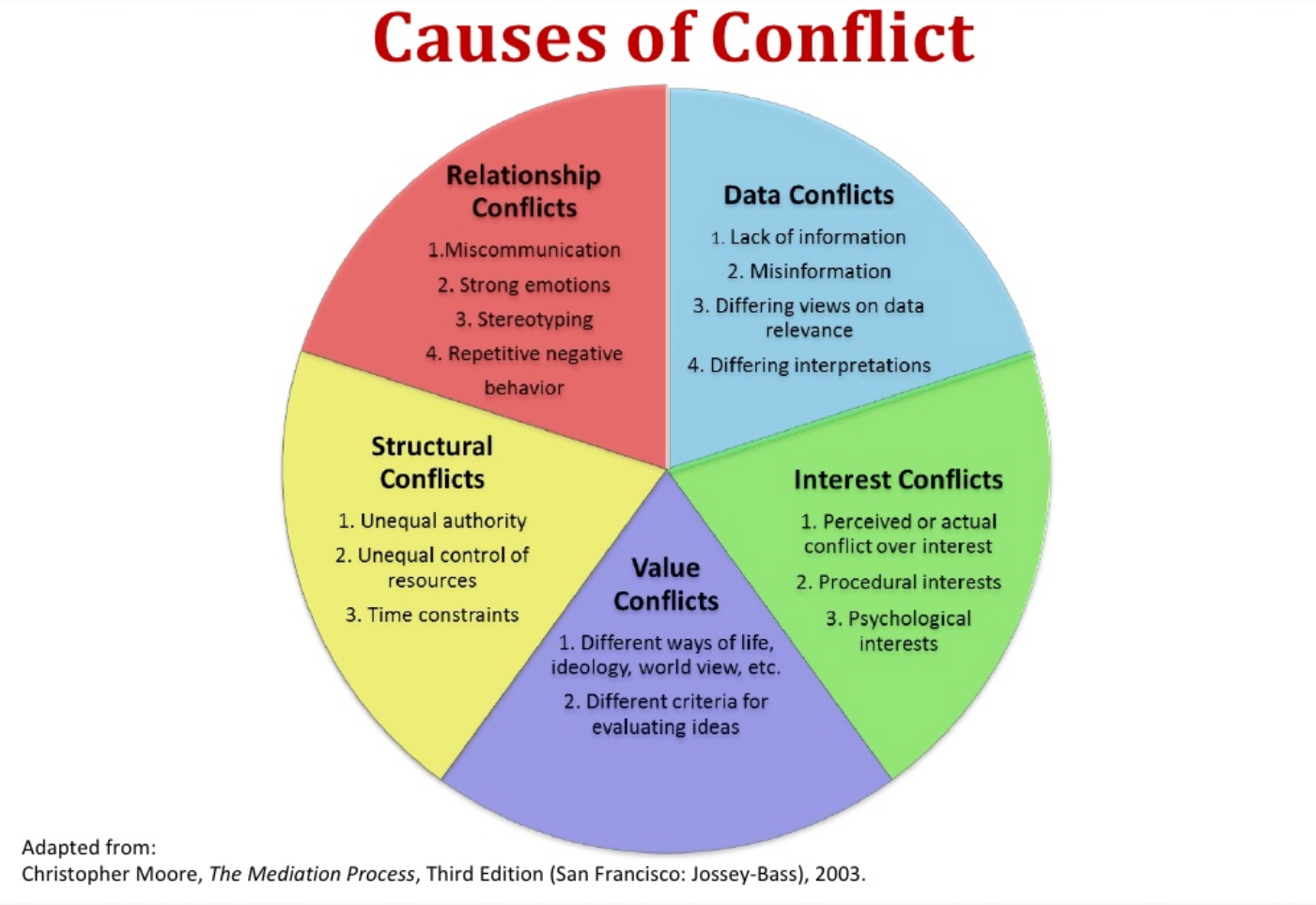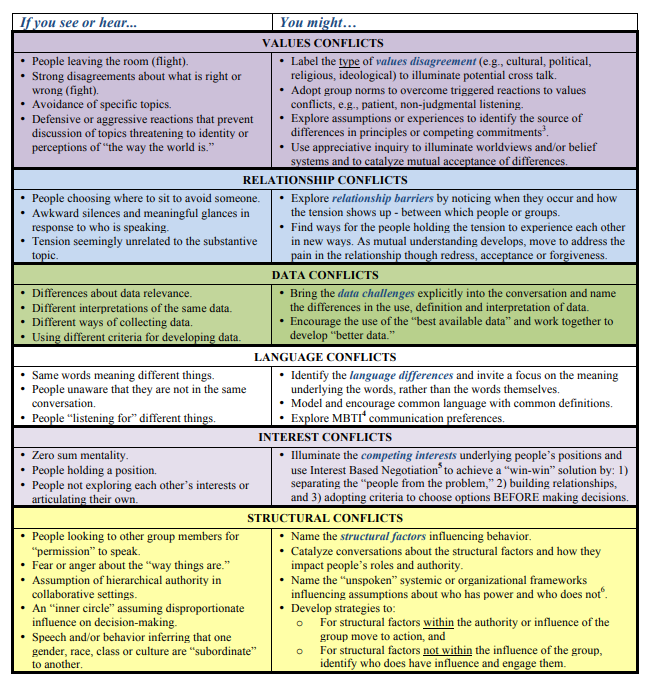“The circle, divided into five components, illustrates the potential sources of conflict in negotiations. Understanding the impact of imbalances within the circle forces all parties to first identify and diagnose the source(s) of conflict, and then parley for resolution.”
Summary
The Circle of Conflict is a visual illustration of the main sources of conflict. Noted negotiator and mediation expert, Christopher Moore originally came up with this model to help support mediation and negotiation efforts. This tool is useful as a means of identifying and agreeing on the source of a conflict. Understanding the source of a conflict can go a long ways to developing a strategy for resolving the issue collaboratively.

Key Ideas
There are five primary sources of conflict:
- Relationship Conflicts – Source of conflict is inter-personal differences, miscommunication, strong emotions, lack of trust or interaction styles. Language can sometimes play into this. Start with prayer and a one-to-one conversation. A third party mediator or coach may be useful to reach an understanding in some situations.
- Data Conflicts – The source of this kind of conflict is the lack of information, misinformation, different view of relevance of the data, or interpretations of what the data means. This kind of conflict can often be avoided by making sure that all data is shared and discussed. Developing a consensus about the data’s importance and how to interpret it early in a process in critical.
- Interest Conflicts – The source of this kinds of conflict is based on competing or conflicting interests, interests around the procedure for making a decision or negotiating an outcome or psychological interests (status, power, identity, autonomy etc.). In a disagreement, what one party wants is their position. Interests are the reasons behind that position. Identifying and addressing the underlying interests involved can often lead to a positive resolution.
- Value Conflicts – These conflicts are caused by differing world views or criteria for evaluating ideas. They also may be due to perceived disrespect or violation of a personally held value. Resolving this kind of conflict can often be done by naming the value at stake and understanding its importance to the individual or partnering organization. Often a resolution can be found that honors the value in question while achieving the desired outcome.
- Structural Conflicts – The source of this kinds of conflict is unequal power, authority, influence/voice, control of resources, or time constraints. Oftentimes structural conflicts have their roots in culture, history, or tradition and as such may be overlooked or not even considered. Deliberate conversation is needed to identify, explore, and collaboratively resolve the issue. It often takes courageous facilitation, a willingness to share experiences or perspectives, and a prayerful openness to release or share assumed privileges, “rights” or power.
Common Interventions

Developed by Jolie Bain Pillsbury.
How to Use the Circle of Conflict
- Explain the five sources of conflict.
- Have the group change the size of each area of the circle to represent how likely the source of conflict is in the network.
- Use the circle as a guide to help all the parties decide on the cause/s of a conflict.
- Facilitate a discussion about each named source of conflict. Take the time to pray and listen closely. Note specific actions, behaviors, examples, and words etc. that illustrate the issues. Make sure to keep the focus on the issue rather than on the person.
Download / Citation
- J. Lindstrom. Tools and Techniques for Managing and Resolving Conflict. University of Washington. Slideshow. Part 1 of 4. slide 11.
- Jolie Bain Pillsbury. Adapted Circle of Conflict. 2015.
- Christopher Moore’s Circle of Conflict. Smilemundo web site. May 8, 2016.
Related Resources
- Rene Mbongo. Conflict Resolution in Partnerships. Video. 2016.
- Brouwer, Hemmati and Woodhill. Seven Principles for Healthy and Effective Partnerships. Great Insights. 2019.
- Dave Hackett. Reconciliation and Peacebuilding in Network Leadership. Article. June 2018.

